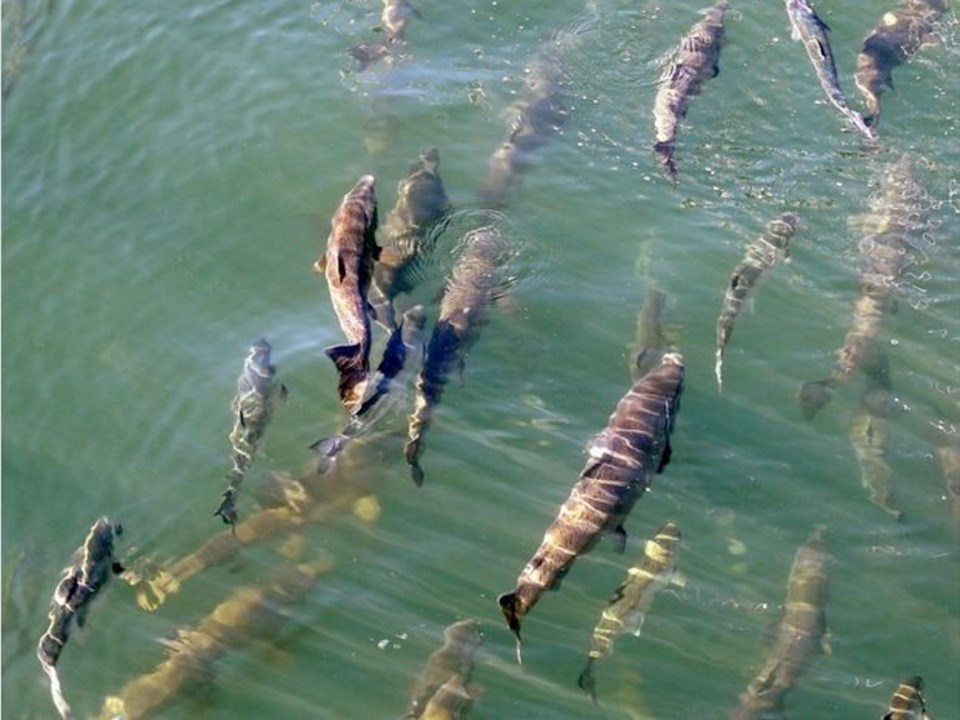The “blob” is gone, but it’s left a troubling legacy on B.C.’s Pacific coast.
The blob is the popular name for a huge patch of warm water that featured record temperatures — in some cases, three to four degrees Celsius above normal — in the Northeast Pacific starting in 2013 and running through late 2015 and early 2016.
Scientists are now concerned that young fish feeding at sea during the blob’s presence did not have enough nutritious food to eat — and that could translate into reduced adult fish to harvest going forward.
“We’re in a transition,” Ian Perry, senior federal scientist at the Pacific Biological Station in Nanaimo, said in an interview. “Although the blob is gone, the effects of the blob, particularly on the longer-lived fish species, are still being felt and … are only just now becoming apparent. The impacts it had on fish that went to sea or were just hatching … don’t start to appear in the fishery until now.”
Under warmer conditions, fish physiology can speed up, Perry said, requiring them to eat more. But the sudden presence of less-nutritious plankton from more southerly waters may have left them wanting.
“It’s like you or I eating celery for breakfast, lunch and dinner all the time,” he said.
In the Gulf of Alaska, there are already concerns that the blob has knocked back commercial cod stocks.
“The Americans may be right,” Perry said. “It’s possible the blob may have impacted some of the early life-history stages of these longer-lived fish.”
Whether the Alaska situation plays out similarly in B.C. waters remains to be seen. Federal fisheries conducted groundfish surveys, including for cod, in the Queen Charlotte Sound area this past summer, but a full analysis won’t be known for a few months.
“It’s something we’ll keep a special close eye on,” Perry said.
This year’s poor salmon returns to the Fraser River are thought to be linked to the blob, which researchers also refer to as the coastal marine heat wave.
Fisheries managers had issued a pre-season forecast for 4.4 million sockeye, but got only 1.5 million, while the forecast for 8.7 million pinks yielded less than half that amount, just 3.6 million.
The blob is thought to be responsible for other changes in the marine ecosystem.
Schools of northern anchovy — a prey fish, similar to herring and sardines — moved northward into local waters in 2015-2016 for the first time in large numbers since 2005, another warm year. The fish reaches about 25 centimetres in length and has a life span of about seven years.
Will Duguid, a PhD fisheries student at the University of Victoria, said the ongoing presence of large numbers of a new small forage fish is bound to have an impact on the marine ecosystem, since they compete to eat plankton, but are also prey for other larger species. How that all settles out is unknown.
The anchovy might provide juvenile salmon with more to eat, while serving as a “predation shield,” taking pressure off those same salmon from being eaten by other creatures, he said.
Meanwhile, a swordfish was spotted last September off northern Vancouver Island — only the second confirmed sighting in B.C. waters, the first time in 1983, also a warm period, Perry said.
As well, there’s been an unusual influx of gelatinous zooplankton, or pyrosomes, in local waters. The consequences are unknown. Bottom-dwelling crabs eat them, and they’ve been found in the stomachs of halibut. But they also pose a nuisance by clogging fishing nets.
The blob was replaced in 2016 by an El Nino climate event, which also resulted in warmer-than-normal temperatures of one to two degrees. A La Nina cooling trend is predicted for this winter, which should help fish stocks to rebound, Perry said.
The blob has never been recorded before, so it’s anyone’s guess when it might return, he added.
“The conditions we think caused the blob were an unusual arrangement of atmospheric circulation. There’s quite a bit of debate on what caused that. Because we’ve seen one, the probability of it recurring is not zero. How much above zero, nobody knows.”
While longer-lived fish are adapted for temperature swings, more extreme long-lasting effects could pose problems.
William Cheung, an associate professor in the Changing Ocean Research Unit at the University of B.C., said B.C. species such as salmon and herring are especially at risk, along with the coastal First Nations that rely upon. In that sense, we are also witnessing a cultural change.
UBC, Simon Fraser University and the University of Ottawa are teaming up on a study starting next year on the impacts of ocean warming and species diversity and abundance on First Nations.



